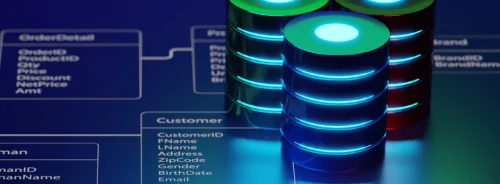Application modernisation is a critical challenge for many healthcare organisations, especially those grappling with outdated systems and technologies. In a field where technology plays a crucial role in both patient care and operational efficiency, addressing technical debt is essential to keep up with evolving demands. While modernisation may seem overwhelming, many healthcare providers are already finding success by leveraging their existing technology stack. This article explores how organisations can enhance security, efficiency, and scalability through application modernisation, with insights from providers already embarked on this journey.
Enhancing Healthcare with Application Modernisation
Healthcare organisations, often burdened by legacy systems, are particularly vulnerable to the effects of technical debt. As IT systems age, they become more challenging to maintain and secure, and their limitations can hinder operational efficiency. Application modernisation addresses this by updating or replacing legacy systems with more scalable and secure solutions.
The top reasons for pursuing application modernisation for healthcare providers include improving security, increasing reliability, and boosting scalability. In home healthcare, for example, providers are modernising their IT infrastructure to accommodate the growing demand for services, especially as the baby boomer generation ages. Modernising these systems allows organisations to simplify workflows, improve device management, and ensure data security while continuing to provide high-quality patient care.
At Amedisys, one of the largest home healthcare providers in the U.S., modernising remote device management using Intel’s vPro platform significantly improved security and operational efficiency. By optimising existing devices, the organisation was able to reduce costs and improve IT support, resulting in fewer disruptions for both remote and office-based staff.
Optimising IT Operations and Reducing Technical Debt
Application modernisation can greatly enhance the efficiency of healthcare IT operations, allowing organisations to focus on more strategic priorities rather than day-to-day troubleshooting. At Amedisys, for instance, the remote management capabilities provided by Intel vPro enabled IT teams to manage and troubleshoot laptops remotely, reducing employee downtime and enhancing productivity.
For many healthcare organisations, technical debt—the accumulation of outdated systems and software—has long been a barrier to efficiency. Delayed updates and maintenance often lead to inefficiencies that affect patient care and operational workflows. Modernising back-office operations by integrating more advanced IT solutions can reduce this debt and streamline processes. In Amedisys’s case, IT staff were able to proactively address security issues and update software without disrupting users, leading to faster troubleshooting and more time to focus on larger business goals.
This kind of modernisation improves operational efficiency and provides a better user experience for employees. As demonstrated at Amedisys, simplified device management allowed their IT teams to focus on enterprise-wide initiatives while ensuring that caregivers and support staff could work without interruption. By reducing the time spent managing outdated technology, organisations can redirect resources toward more impactful projects that improve patient care and staff satisfaction.
Empowering Data-Driven Decision Making
One of the most significant benefits of application modernisation is the increased ability to gather and analyse data. In healthcare, where data is critical to both clinical and operational decisions, having modern systems that integrate seamlessly with one another is essential. Modernisation efforts often lead to better data collection and more accurate analytics, enabling organisations to make informed decisions about patient care, staffing, and resource management.
For home healthcare providers like Amedisys, having access to reliable data allows for more efficient workforce management, improved patient scheduling, and enhanced decision-making capabilities. In addition, integrating platforms like Intel’s vPro with systems like ServiceNow and Microsoft Teams provides even more opportunities for automation, freeing up IT staff to focus on higher-value tasks.
Data is critical for day-to-day operations and forms the foundation for implementing emerging technologies like artificial intelligence (AI). As healthcare organisations modernise their applications, they are better equipped to harness AI to analyse large datasets, identify trends, and optimise both clinical and operational workflows. For example, AI-driven analytics can help identify gaps in care, streamline administrative processes, and improve patient outcomes by offering previously unavailable insights.
Conclusion
Application modernisation is no longer optional for healthcare organisations looking to improve security, efficiency, and scalability. The process may seem daunting for many, but providers who have already embarked on this journey demonstrate that it is achievable, even with existing technology. As Amedisys has shown, modernising back-office operations and enhancing remote device management can lead to significant improvements in both patient care and staff efficiency.
By reducing technical debt, optimising IT workflows, and enabling data-driven decision-making, healthcare organisations can continue to provide high-quality care while staying ahead of the curve in an ever-evolving technological landscape. Embracing application modernisation benefits IT teams and ultimately leads to better patient outcomes and more efficient use of healthcare resources. The future of healthcare depends on this transformation, and organisations that prioritise modernisation will be well-positioned for success.






